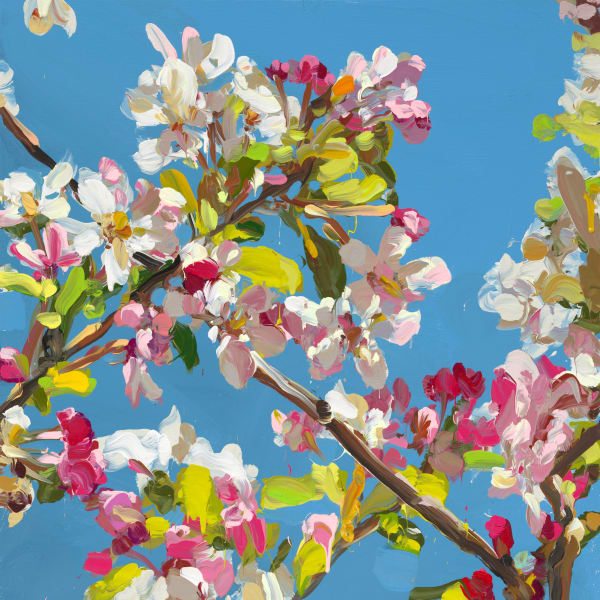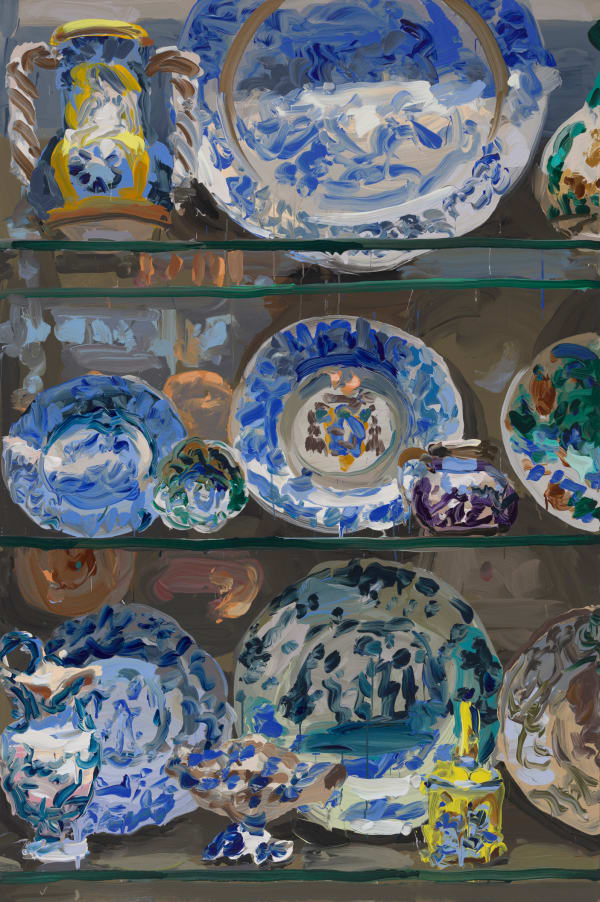Jan de Vliegher
Belgian painter Jan De Vliegher is known for his paintings in which color and composition take precedent over subject matter. De Vliegher captures his subjects with vigorous yet controlled brushwork; working ‘alla prima’, wet paint on wet paint to achieve a sense of vitalized reality. Often using large brushes, even a broom can double as a painter’s brush, he applies the paint with skillful accuracy, limiting each and every stroke to match his intentions. The compilation of paint, forms, light, and shadows result in a perfect harmony of movement. The resulting effect is that his works appear to capture a moment in transition, a brief and fleeting moment in time. De Vliegher uses the photographic imagery as a starting point in his work. However, the paintings do not imitate, or mimic reality. De Vliegher attaches no importance to the narrative or anecdotic aspect but is constantly searching for universal situations. Ordinary objects and events from his own environment are captured on film, compositionally reorganized and transformed into a painting in surprisingly strong colors. He knows exactly how to convincingly paint an effect of light or darkness with a particular brush technique, or how to suggest a specific material. The thick paint texture gives his work a sensual touch.
Jan De Vliegher lives and works in Bruges, Belgium. The artist received his Master of Fine Arts degree at the Hoger Instituut voor Beeldende Kunsten Sint-Lucas Ghent, in Belgium, in 1986. He has exhibited extensively in New York and Europe including Knokke, Belgium; Venice, Italy; Stockholm, Sweden; Berlin, Germany and New Zealand.
De Vliegher: ‘Content in painting means more to me then a good political, social or moral story, or whatever kind of meaning/storytelling. It is something poetical and emotional, pure painterly, a free way of painting, a celebration of life. My approach to painting has a formal element as well. I look at paintings in terms of color, form and composition. I like to compose, to create order by means of different compositional styles’.
-

Jan de Vliegher
Splendor Blossoms 25 Mar - 22 Apr 2023Belgian painter Jan De Vliegher is known for his paintings in which color and composition take precedent over subject matter. De Vliegher captures his subjects with vigorous yet controlled brushwork;...Read more -

VOLTA’14 BASEL
11 Jun - 16 Jul 2018VOLTA, Basel’s art fair for new international positions, debuted in 2005 as a collaboration between dealers and friends. The aim was to secure a platform for international galleries beyond young...Read more -

Art Paris
5 - 8 Apr 2018From April 5th-8th 2018, Art Paris Art Fair will bring together 142 galleries from 23 different countries in the spectacular setting of the Grand Palais. Diversity and discovery are the...Read more -

PAN Amsterdam
19 - 26 Nov 2017PAN AMSTERDAM: FAIR FOR ART, ANTIQUES AND DESIGN RAI Amsterdam conference building Europaplein 20 1078 GZ Amsterdam Booth 88Read more -

Volta New York
1 - 5 Mar 2017Carlos Sagrera’s grandparents’ photo archive triggered this body of work: pictorial representations of interiors interweaving the past and present. The abstracted color sweeps are alternated by almost hyper-realistic details. This...Read more


















